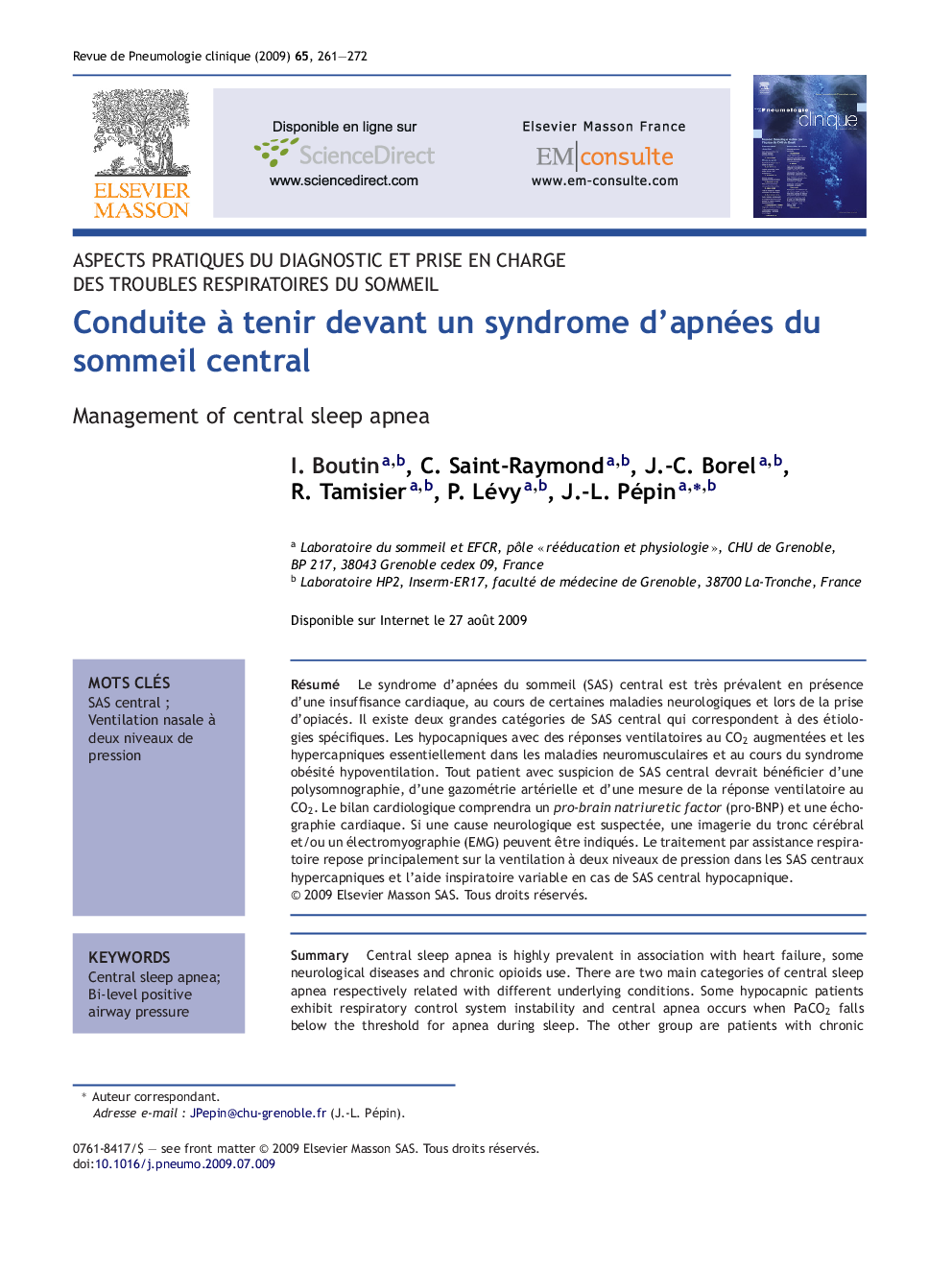| Article ID | Journal | Published Year | Pages | File Type |
|---|---|---|---|---|
| 3419817 | Revue de Pneumologie Clinique | 2009 | 12 Pages |
Abstract
Central sleep apnea is highly prevalent in association with heart failure, some neurological diseases and chronic opioids use. There are two main categories of central sleep apnea respectively related with different underlying conditions. Some hypocapnic patients exhibit respiratory control system instability and central apnea occurs when PaCO2 falls below the threshold for apnea during sleep. The other group are patients with chronic hypercapnia mainly in the context of neuromuscular disorders or obesity hypoventilation syndrome. All these patients should be assessed by recording blood gases, polysomnography and ventilatory responses to CO2. Cardiologic assessment should include pro-brain natriuretic factor (pro-BNP) and cardiac echography whereas neurological examination requires brain imaging and/or electromyography. Ventilatory supports used for treating central sleep apnea are non-invasive ventilation and servo-assisted ventilation in hypercapnic and hypocapnic patients respectively.
Related Topics
Health Sciences
Medicine and Dentistry
Infectious Diseases
Authors
I. Boutin, C. Saint-Raymond, J.-C. Borel, R. Tamisier, P. Lévy, J.-L. Pépin,
